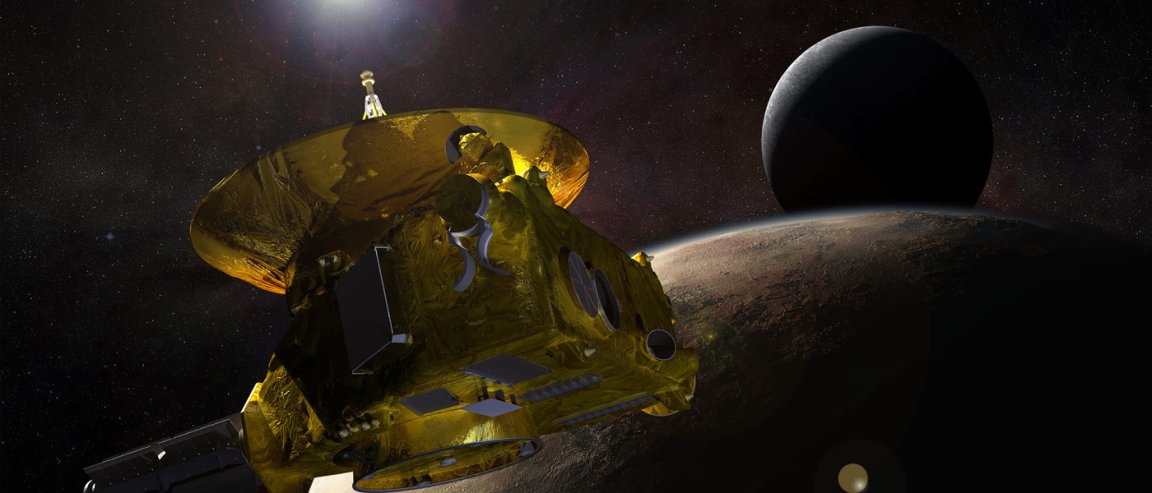

There is a tiny spacecraft racing towards the most distant reaches of the solar system. It is known as New Horizons, and it started its journey nearly a decade ago.
Launching in January of 2006, New Horizons has been making its way across our corner of the universe for the last 9 and a half years (now going on 10). Over the course of its long journey, it slowly approached Pluto, moving ever closer as the days crept on. However, when it finally reached this tiny dwarf planet, the spacecraft was anything but slow. It passed Pluto and its moons (Charon, Nix, Hydra, Kerberos, and Styx) travelling at an amazing 43,000 km/h (26,700 mph).
Read Next: Best Images from New Horizons
Since then, it has continued its path towards the Kuiper belt, a disc-shaped region of volatile icy compounds (like methane, ammonia, and water)—the home of the comets.
So, how fast is it moving now?
This GIF was created by Google product developer Clay Bavor in order to help us better understand the speeds involved, give us a little bit of perspective. It puts our airplane speeds alongside NASA’s New Horizons probe, and in so doing, it effectively reduces us to a snail’s pace.
The 747 travels at a speed of 885 km/h (550 mph), the Blackbird can reach a top speed of 4,345 km/h (2,700 mph) while New Horizons is currently moving at a staggering 57,936 km/h (36,000 mph).
Flying at 37k feet, this is what it would be like to look out the window of a 747 vs. an SR-71 vs. a New Horizons. pic.twitter.com/ChVsgK77Rl
— Clay Bavor (@claybavor) July 17, 2015
Ultimately, this excessive speed is precisely why New Horizons didn’t stop at Pluto to take a few orbits around the dwarf. Instead, it raced past at (literally) breakneck speeds. If it did try to slow in order to enter orbit, it would have needed to reduce its speed by some 90%, which would require far more fuel that it can carry.
But all is not lost, as the mission will allow us to better understand the icy land of comets.
By studying Kuiper Belt Objects up close, scientists hope to gain better insight into the history of our solar system. As it stands, no one is completely sure what most KBOs are made of—or even how many exist. There may be thousands of undetected KBOs hanging out near the edge of the solar system, and some estimates place that number in the trillions. A few known KBOs, like Quaoar and Sedna, could ultimately be large enough to get bumped up dwarf planets.
New Horizons’ power supply should keep its cameras and instruments running for years to come, making close study of at least one more Trans-Neptunian Kuiper Belt Object a real possibility. If its next flyby is successful, New Horizons’ would set a new record for the most distant object ever studied up-close by scientists.